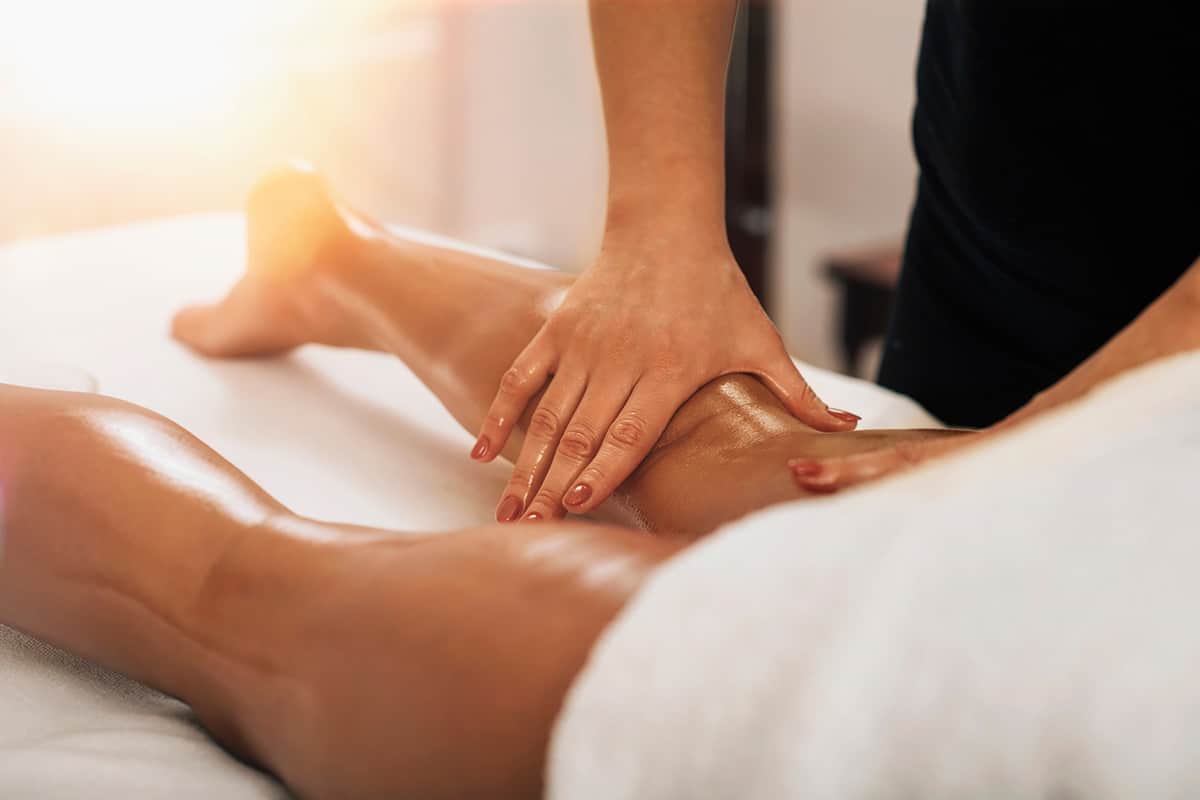Like a garden freshly watered by gentle rain, the body flourishes after a lymphatic drainage massage.
One should cherish this rejuvenation period.
It is essential to embrace hydration, enrich the diet with nutrients, and grant the body ample rest to maximize the therapeutic benefits.
Hydrate After Your Massage
It is imperative to drink water, ensuring that the lymphatic system continues to flush out toxins.
After a lymphatic drainage massage, the body requires an abundance of fluids to aid in the efficient removal of waste from the lymph nodes. Water serves as a vital conduit, allowing the lymphatic system to function optimally and support overall health.
Consuming water in abundant quantities can bolster one’s vitality. As the lymph moves through the body, drinking water keeps the fluids at an adequate level, supporting the effective transport of nutrients and waste products.
Professionals recommend consuming at least two liters of water post-massage to facilitate the detoxification process. This critical step fortifies the benefits of the lymphatic drainage massage and ensures continued health, augmenting the renewed sense of energy and well-being achieved during the session.
Benefits of Resting Post-Massage
Resting after a lymphatic drainage massage allows the body to fully assimilate the therapeutic effects and foster a deeper sense of relaxation.
By resting, an individual maximizes the benefits of a lymphatic drainage massage, as it helps balance the body’s energy, calming the nervous system and enhancing the massage’s ability to promote recovery and detoxification, which can be particularly beneficial for those recovering from illness. This period of rest can also prevent any potential dizziness or lightheadedness, thus ensuring a smoother transition to normal activities.
Additionally, resting aids in the reduction of stress by allowing time for the muscles to relax completely. In conjunction with the massage, this post-session downtime enhances your lymphatic system’s ability to clear out toxins and supports the body’s healing processes more effectively.
Furthermore, resting post-massage provides an opportunity to integrate the overall wellness experience into one’s daily routine, sustaining the positive effects felt both physically and mentally, especially for those managing conditions like lymphedema. This intentional act of self-care not only deepens the immediate benefits but also encourages long-term improvement in health and well-being, optimizing the lymphatic system’s function for ongoing vitality and resilience.
Post-Massage Diet Tips
After a lymphatic drainage massage, hydration plays a pivotal role in reducing swelling and aiding the detoxification process.
Firstly, one should consider increasing their water intake to a recommended eight to ten glasses per day. This helps in flushing toxins out of the body that the massage has mobilized, promoting optimal lymphatic function and overall well-being. It is also beneficial to include herbal teas, which can provide additional antioxidants and support hydration.
Moreover, it is advisable to adopt a balanced diet with a focus on nutrient-rich foods, especially after undergoing surgery. Incorporating fruits, vegetables, lean proteins, and whole grains into meals can help replenish vital nutrients, thus enhancing recovery and maintaining energy levels post-massage.
In conclusion, an anti-inflammatory diet can significantly support the effects of a lymphatic drainage massage. Reducing the consumption of processed foods, sugars, and unhealthy fats while increasing the intake of omega-3 fatty acids, which can be found in fish, nuts, and seeds, may help reduce any residual inflammation, ensuring prolonged benefits from the massage session.
Exercise Recommendations
Knowing what to do after lymphatic drainage massage is crucial. Exercise, in particular, plays an essential role.
Engaging in light physical activity can aid in the further stimulation of the lymphatic system and the lymph nodes. Focus on low-impact exercises like walking, gentle stretching, or yoga to continue encouraging lymph flow, which in turn helps flush out the accumulated toxins mobilized by the massage session. Consistency, rather than intensity, is the key to maximizing the benefits of such exercises, which in turn supports a robust immune system.
Walking promotes lymph movement.
Furthermore, swimming can be a beneficial exercise due to its low-impact nature, providing a gentle yet effective full-body workout. This can help increase circulation and lymphatic flow without placing undue stress on the body.
By integrating these exercise recommendations, individuals can optimize their lymphatic health, enhancing the overall results of their lymphatic drainage massage. Regular practice of these activities not only supports physical wellness but also contributes to long-term health benefits by maintaining an efficient lymphatic system.
Clothing and Comfort
After undergoing a lymphatic drainage massage, their choice of clothing is crucial. Opting for loose-fitting garments will ensure unparalleled comfort, allowing the body to breathe and support lymph flow.
Tight clothing can impede lymphatic circulation and cause discomfort.
Choosing natural, breathable fabrics such as cotton will also help ensure their skin remains irritation-free, enhancing post-massage comfort. They may consider choosing colors and styles that promote a sense of calm and relaxation.
Their overall well-being can be greatly influenced by how they dress post-massage. By prioritizing loose, comfortable attire, they not only aid their lymphatic system but also create an environment conducive to healing and relaxation. Therefore, it is advisable to consider both comfort and function when selecting clothing after a lymphatic drainage massage.
Managing Potential Discomfort
Some discomfort or mild illness may feel normal initially.
Following a lymphatic drainage massage, they might experience mild soreness and may wonder what to do after lymphatic drainage massage. This reaction occurs as the body adjusts to the enhanced lymphatic circulation, which is an integral part of the healing process. Typically, soreness of this kind can be managed by gentle activities or light stretching.
Adequate hydration is also crucial.
Drinking plenty of water assists in flushing out toxins and supports the lymphatic system’s effectiveness. Additionally, incorporating herbal teas like peppermint or chamomile can provide soothing benefits.
A warm bath with Epsom salts can also alleviate any lingering discomfort. The salts’ magnesium content helps to relax muscles and reduce inflammation, making it easier for their body to recover. Lastly, using over-the-counter pain relievers, if necessary, can provide an additional layer of comfort and ensure a smoother recuperation.
Follow-Up Appointments
Consistent follow-up appointments are essential for maximizing the benefits gained from lymphatic drainage massage.
They should consult with their therapist to determine the optimal frequency.
Typically, an individual’s needs may vary, but scheduling appointments every four to six weeks is often recommended. This regularity helps maintain lymphatic health, supports detoxification, and optimizes the overall impact of the treatment.
These appointments allow practitioners to track their client’s progress, make necessary adjustments to the treatment plan, and address any concerns or new issues. By committing to a continued schedule, they can enhance their well-being, maintain momentum, and ensure long-term health benefits.
Monitoring Your Body’s Response
Once they have undergone a lymphatic drainage massage, it is crucial to monitor their body’s response, particularly any changes in the lymph nodes, to catch signs of lymphedema early.
Inevitably, how one’s body reacts can provide significant insights into the effectiveness of the treatment. They should be attentive to both immediate and long-term changes.
Noticing any immediate reactions, such as increased urination or a mild feeling of fatigue, is a good indication that the lymphatic system is actively responding to the therapy.
Over the next few days, they should also pay attention to their energy levels, any reduction in swelling, or general improvements in skin texture and immune function.
Monitoring these indicators will help them and their therapist adjust future sessions to maximize benefits and address any specific concerns.


